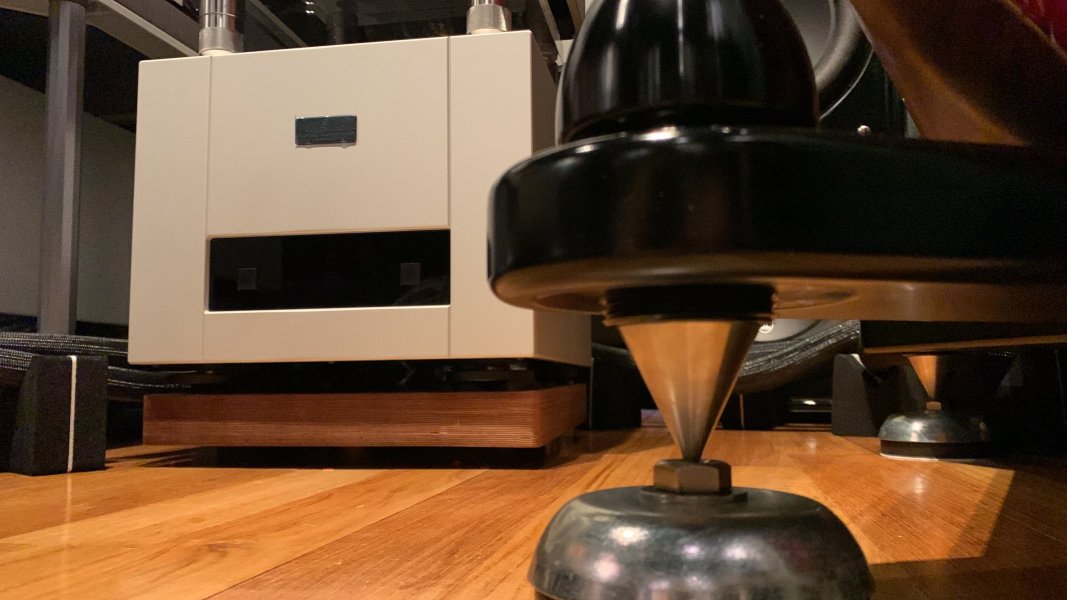If I may Robert, I would be happy to assist with your question.
The CMS LS 1.0 would replace both the Kharma footer as well as the spike. For ease of use with your speakers, I advise either mounting them directly under the plinths or utilize the spike insert along with our titanium adapters. The second option is more secure but I'm noticing the scalloped recess of the plinth around the spike from this photo. Depending on diameter, this might inhibit full surface to surface contact with the top of the LS Footer. In which case I would advise bypassing the spike insert and simply place them just inside of that position for better contact.
The cylinder top diameter of the LS 1.0; the part that must be in surface to surface contact with the bottom of your speaker, is 60mm. This should help you decide how it will fit under your plinth.
This video may help illustrate what I'm trying to describe. Please feel free to contact me if you have any questions.






















